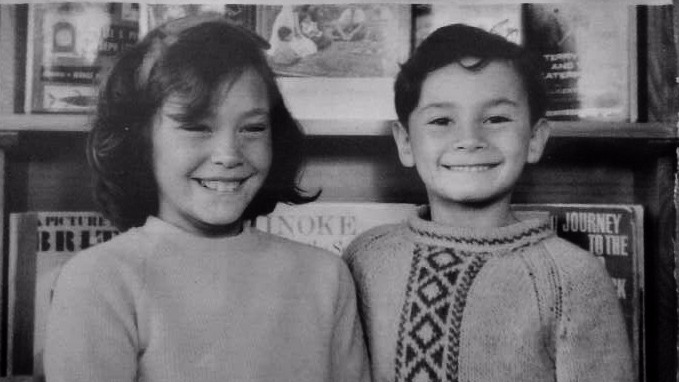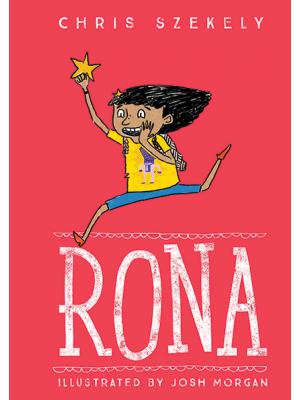Chief Librarian at the Alexander Turnbull Library and award-winning children’s book writer, Chris Szekely on how he became a writer.
As a youngster who came of reading age in the 1970’s, my literary fare was predictable: Enid Blyton, Dr Seuss, Christmas annuals and comics. The comics and annuals were typically British; The Beano was my favourite. My favourite characters were Dennis the Menace and Gnasher. After all, we three shared the same unruly haircut, and were naughty without even trying. Billy Whizz was another favourite. Forty years on, I now have the same haircut as him.
And Enid Blyton? I know, I know… Sexist, racist, snobbish, blah, blah, and all of that. But what adventures! I have a (probably inaccurate) memory of the Five going hiking on the Yorkshire Moors, lying in the sun on beds of heather, having sandwiches, cake and flasks of tea. How nice is that? Twenty years later when I visited the moors, I wondered how they could have done that without worrying about black adders. Of course, George, with her mop of curly black hair, was my favourite character. She was (ahem) ‘different’, and just like Dennis and I, she had a dog, too..

So where was New Zealand in all of this?
I recall a bit of New Zealand reading – Māori legends. And most likely, Māori legends as told by A.W. Reed. Later, at high school, probably prompted by Reed’s retellings, I went through a phase of reading folk tales and legends from around the world. I had a short-lived ambition to read folk tales from every country. I think I got as far as Nigeria and Poland.
One particular reading experience from this era does stand out. A teacher read aloud ‘A Game of Cards’ from Witi Ihimaera’s book of short stories, Pounamu, Pounamu. It was the most moving thing I’d ever heard from a book.
If there is a single story that stands out as having an impact on me on me as a kid, it is probably this one. Interestingly, at the time it was likely beyond my reading ability, so having it read aloud was important. I didn’t encounter the story again until ten years later at university, and even today, when I read it, the story stirs up memories. It resonates.
In the late-1980s I worked at the Auckland School Library Service. The job involved responding to teacher topic requests. ‘Rocky Shore’ and ‘Dinosaurs’ were permanent fixtures on the topic list, and there were never enough books on these topics to go around. ‘Māori’ had also become a popular topic. By then there were books by Ron Bacon, Peter Gossage, Patricia Grace and Miriam Smith, but still not nearly enough titles to satisfy a growing interest and need from schools.
If there is a single story that stands out as having an impact on me on me as a kid, it is probably A Game of Cards’ from Witi Ihimaera’s book of short stories, Pounamu, Pounamu.
That is when I began to write.
During this time, books by Miriam Smith really stood out for me. Her picture books resonated in much the same way as Ihimaera’s short stories. Kimi and the Watermelon tells the story of a young girl who desperately misses her uncle. She marks his prolonged absence with the growth of a watermelon, the seed of which she planted with her uncle. He told her he’d back when the melon was ripe. Then one morning, the melon is gone.
Smith’s Annie and Moon is another story of loss and longing. Annie’s parents are no longer together. Annie and her mother move from house to house looking for a suitable home. Annie’s source of comfort is her pet cat, Moon. And then one day, Moon disappears.
Fast-forward twenty years.
I was keen to write a book that was ‘New Zealand’ in its telling, where being Māori was assumed, where there was fun and laughter, and where there was adventure and drama in the ordinary.
Rona is a collection of slice-of-life vignettes that draws on a range of sources. It picks bits and pieces from the traditional Māori story of Rona and the Moon – the central character is bossy and argues a lot, but likeable nevertheless. There’s a moon that comes and goes, waxes and wanes, and at a crucial moment, disappears behind the clouds. The story draws heavily on my own family recollections, from back in the day to more contemporary times. It aims to appeal to a Kiwi youngster who may not be inclined to read. And most of all, it aims to be real.
I like to think there’s a bit of Dennis the Menace in Rona, and maybe even a bit of George. Certainly, I can confirm, there’s a bit of Gnasher.

RONA
By Chris Szekely
Illustrated by Josh Morgan
Published by Huia Publishers, October 2016
RRP $15.00

Chris Szekely
Chris Szekely is the Chief Librarian of the Alexander Turnbull Library. In 2012, his book Rāhui won the Picture Book Category at the New Zealand Post Children’s Book Awards, as well as the LIANZA Russell Clark Award for Illustration and the Librarian’s Choice Award.
Chris is keen to see New Zealand as a nation of readers, where Kiwi stories are celebrated and Te Reo Māori is the norm. He thinks that libraries do a brilliant job as reading champions and salutes the work of New Zealand writers and publishers.



